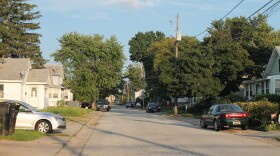How communities recover from disasters—and prepare for future ones—can be important for social justice, says Perez.
In fact, Perez says some efforts to protect communities from climate-driven disasters— such as through projects that create more green space to absorb flood waters— can cause “climate gentrification.”
“Most of the examples of at least greening as an aspect of structural mitigation in urban, coastal areas, tend to suggest that the communities don’t fare as well as you would think,” he said. “Because of displacement issues.”
Perez says one way to offset this is by allowing the community to be involved early.
“[The solution] has to be tailored in a way so that affordable housing, rent control, community land trusts and a variety of other factors come into play very early on through community involvement, to prevent the negative aspects of a creation of different types of inequalities,” he said.
Perez says in the aftermath of a disaster, government assistance needs to be timely and easy to understand—and must include temporary housing and access to jobs.








